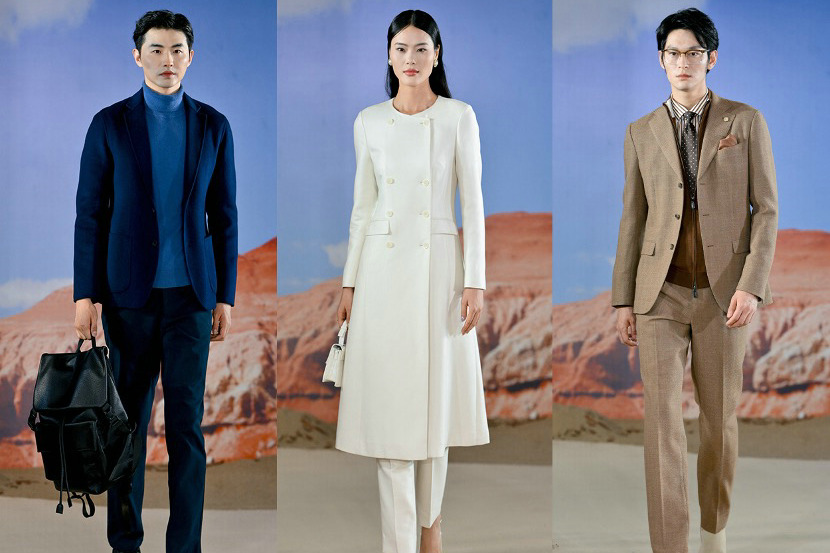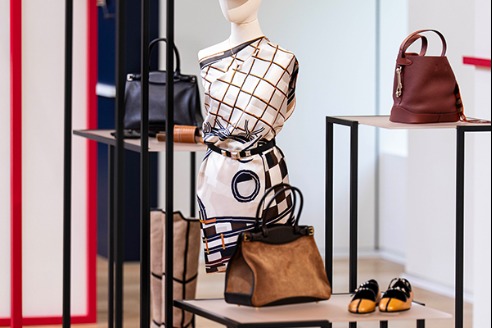Framing the past
Cruise ship crew member captures images of a land on the cusp of huge change, Wang Xin reports in Shanghai.


In the early spring of 1980, Mike Emery stepped onto the land of China for the very first time. As a crew member of a cruise ship and a photographer, Emery, 23, wandered with a camera through the streets and captured images of people's daily lives in several major cities such as Shanghai, Beijing and Tianjin, framing many vibrant and colorful moments that are now gradually fading with time.
Born in Staffordshire, England, and later settling down in Sydney, Australia, Emery vividly remembers his first trip to China 45 years ago, which he describes as exciting, lucky, and full of new discoveries.
At that time, Emery got a job on a new cruise ship based in Japan that was heading to China. Over the course of about three months, he participated in seven cruise trips, making him one of the first foreign tourists to visit the nation since its reform and opening-up. He randomly captured scenes of daily lives during China's early transformative era.
His photography book, China 1980, was published in 2019, and an exhibition, Nice to Meet You, running until Tuesday in Shanghai, displays over 100 photos from the book.
"When our ship first docked at the port city of Tianjin, we didn't know what to expect, but it was like a carnival. There was an air of excitement, complete with flags, streamers and a marching band to greet us," Emery writes in the book.
He clearly stood out at that time as a foreigner with fair hair, wearing colorful clothes and carrying a strange object — as many people had not seen such a camera before. Emery was curious about the nation and its residents.

"Groups of up to 50 people would surround me, wanting to speak English, all supremely curious. They were all invariably polite and would ask, 'Excuse me, may I practice my English?'" writes Emery.
Yet, language did not stop Emery from exploring the streets or diving into the crowds. He would put on a big smile, pull funny faces, stick his tongue out, or lie on his back in the middle of the street, trying to stimulate some kind of reaction.
That was how Emery captured one of his highlighted photos during the trip — a boy stretching out his hands to the photographer with a big smile as if to say, "nice to meet you".
Children make up a large part of Emery's photos. Through his lens, he captured children playing on the streets, as well as groups of children he encountered at a kindergarten or on their way to school, most giving him a smile and wave.
"When you look at the laughing faces of these children, you can see the innocence in their eyes. There is no sense of stress. Life was simple. Pure happiness seems to erupt from the smiles of these beautiful people," says Emery.
"They are wonderful subjects to photograph, and their characters shine through these pages. You will see … the way their stance evokes a sense of pride, both personal and cultural."

The photographer noted that children everywhere in 1980 were dressed in brightly colored clothes, a distinct difference to the shades of blue, brown and khaki then worn by their parents and elders.
It was a time when the nation was on the verge of dramatic changes. Emery's evocative imagery not only documents the vibrancy of Chinese street life, but also plays a crucial role in preserving memories of those days and Chinese culture for future generations.
"The pace of life in China's cities in 1980, as I observed it, was steady. There was a calmness that was foreign to me. The bicycles weaved along the streets, and the buses meandered slowly. There was no hustle and bustle or sense of rush hour," says the photographer.
During his trips to China, Emery observed and captured changes in the general appearance of society. He saw people start to become more individual, expressing themselves with new clothes and more adventurous hairstyles. Luxury goods, such as black-and-white TVs, started to appear in the shop windows in Shanghai, all signaling a complete change on the horizon.
It was long after Emery's cruise trip days ended that he realized the significance of these old photos. There are very few photographs — especially in color — available from that period dedicated to people going about their daily lives. He hopes these photos can provide an insight into Chinese society in 1980 and by comparison, help people know how much it has changed since.

Emery came back to China in 2019. When he stepped off the plane and got to see the brand-new country, he could hardly believe his eyes. More incredibly, shortly after the publishing of his book, he even unexpectedly reconnected to two girls featured in his photos taken 45 years ago.
Still keeping over 300 photos of those trips in 1980, Emery says the people in the photos are the important ones who contributed to building China into what it is today. In a time when cameras or canvas were not common, such photos became the real records of their past and lives.
"I think it is important for people nowadays to see these photos and learn about the stories, as they bring back memories that are fading," he says.
With photos as the bond, the Australian photographer also aims to foster a deeper understanding and appreciation between Australian and Chinese people and cultures.
Shi Hantao, curator of the exhibition, says: "As a traveler, Emery had no obligations for news reporting or publishing, nor did he need to maintain objectivity. His camera served as a tool to greet and converse with the strangers he met in China. In other words, what he captured was more about the encounter itself than any specific object."
After Shanghai, the photo exhibition will travel to Suzhou in Jiangsu province and then continue to other cities.
Contact the writer at wangxin2@chinadaily.com.cn
If you go
10 am-9 pm, until Tuesday.
Fujifilm X-Space, 398 Huaihai Road (M), Huangpu district, Shanghai.

CHINA DAILY








































